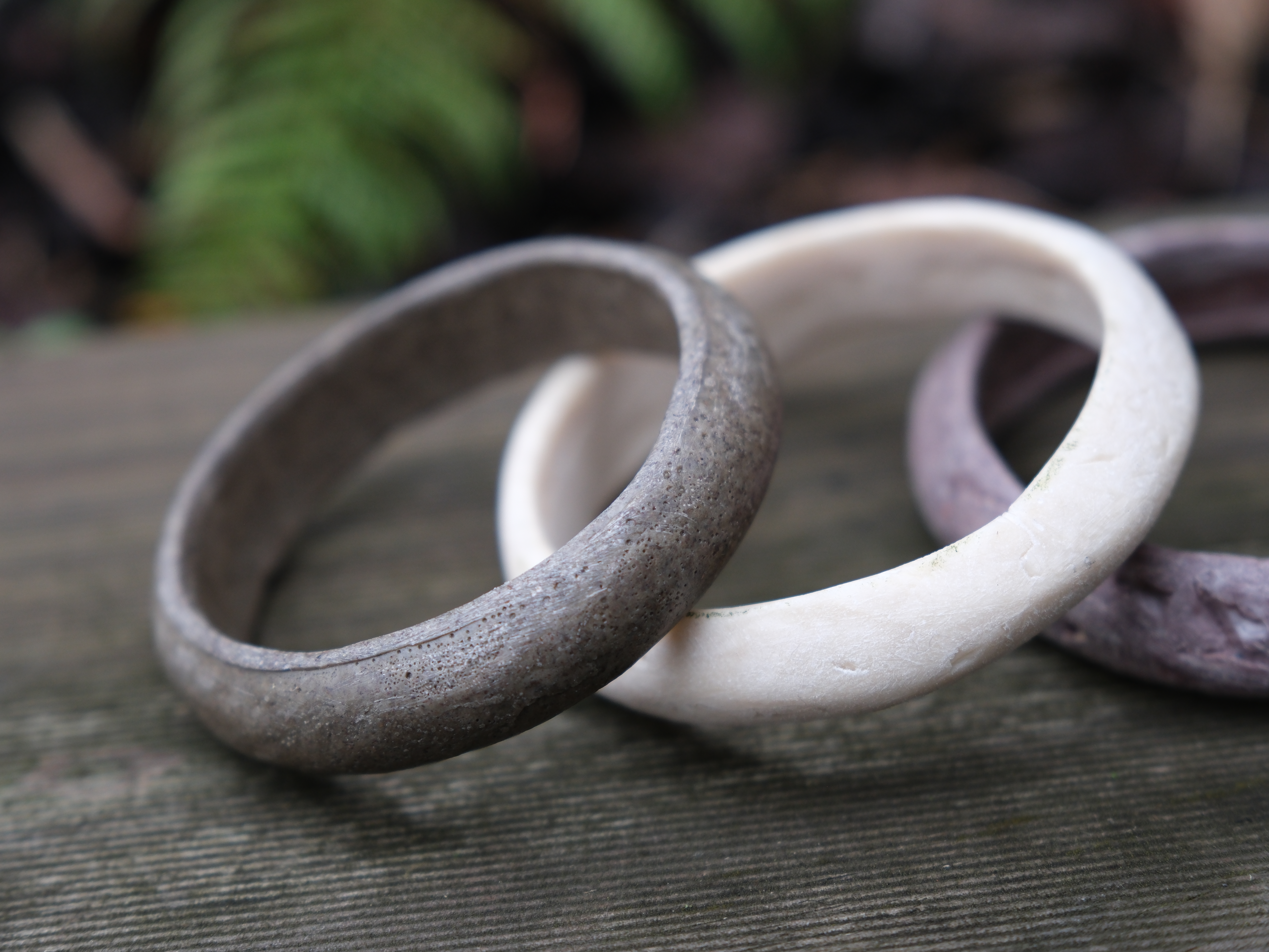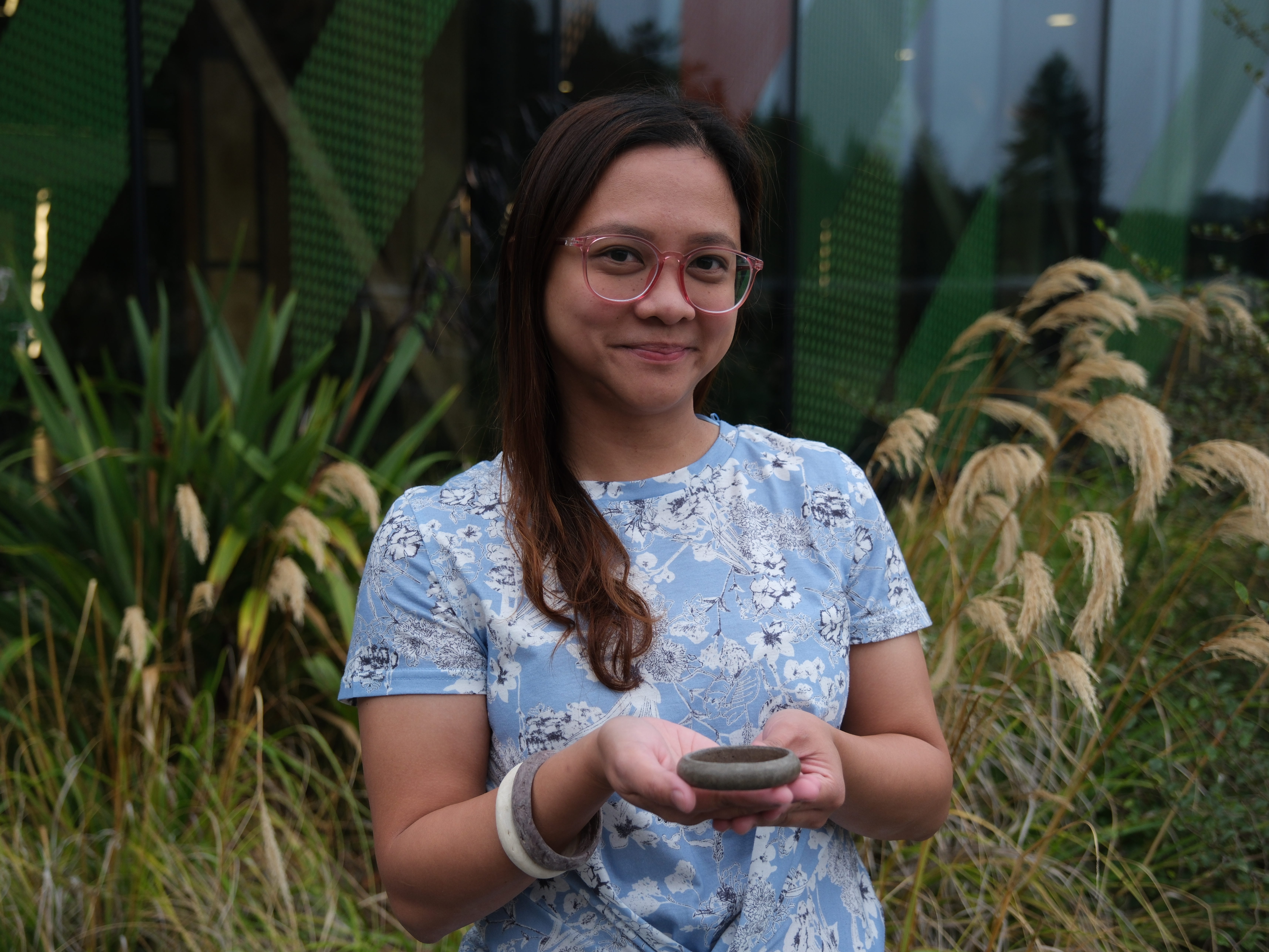Biobased jewellery set to disrupt the fashion industry

Artisan bangles made from all-natural materials could mark a turning point for the fashion industry, thanks to innovative thinking by a team of Scion scientists. They are developing a naturally pigmented PHBV polymer – a biodegradable, non-toxic and environmentally friendly material – to challenge the dominance of traditional plastics.
The bangles will be showcased at the inaugural Bioresource Processing Alliance (BPA) Sustainable Solutions Symposium in Nelson on April 10, 2025, where industry leaders, innovators and researchers will explore high-value products derived from by-products.
Scion is collaborating with Loopback, a social and environmental company led by Ingrid Vink of Think Like Vink, which is dedicated to the circular bioeconomy and the innovative use of biobased materials in fashion. Ingrid believes biomaterials are gaining traction and will significantly contribute to positive environmental solutions for the fashion industry.

“I've been working in the fashion space for over 30 years with a multifaceted background, and I’m passionate about working with local small-scale jewellers and circular systems; however, I have also seen how inefficient and wasteful the industry can be,” says Vink.
"I’m committed to finding sustainable alternatives because a circular system is the only way to truly tackle the challenges we face. Collaboration is essential—it fosters innovation and creates something truly special. That’s why we founded Loopback, our biomaterials company, to partner with Scion on this project."
PHBV [poly(hydroxybutyrate-co-hidroxyvalerate)] is a biodegradable polymer produced through natural fermentation using plant-based sugars or oils. Unlike traditional plastics, it is home-compostable, breaking down naturally without harming the environment.
Stefan Hill, Scion’s Portfolio Leader for High-Value Biorefineries, says while PHBV has been studied since the 1980s, its commercial interest has increased as industries seek biodegradable plastic alternatives. “Scion’s breakthrough lies in naturally tinting PHBV using biodegradable pigments sourced from waste streams – an achievement that enhances its visual appeal and supports sustainability goals.”
Scion Senior Lab Technician Anna de Lena, who is leading the project, highlights how pine needles and grape pomace, or marc (a by-product of winemaking), are being used to naturally pigment the bangles in olive green and burgundy. “These materials are part of waste streams from their respective industries,” she says. “They’re also easy to source, requiring minimal additional processing.”

The Scion team has produced PHBV filament for 3D printing and pellets for injection moulding, allowing them to explore different designs and finishes. “Our 3D printing trials have proven the material’s potential,” Anna says. “Now our focus is shifting to injection moulding. The project's success has led to an investment in a purpose-built mould for an injection moulder – a major milestone that secures its future.”
University of Waikato student and BPA summer student internship recipient Ethan Cooke contributed to this work. His involvement underscores BPA’s commitment to fostering emerging talent and advancing sustainable innovations in bioresource processing.
Ingrid sees the bangles as just the beginning for fashion’s role in biomaterial innovation. “This initiative may have started with sustainable bangles, but its impact reaches much further, driving meaningful change in sustainability and design across industries.
“The investment in a purpose-built injection moulder brings us closer to a future where circular, biobased materials are the norm in fashion and beyond. Jewellery alone won’t save the world, but it can disrupt the industry and launch a new biomaterial. Fashion influences desire and cultural change.”
Scion’s expertise in material science and its access to advanced equipment has been key to the project’s success. “Our team’s ability to create an all-natural PHBV filament and pellets for 3D printing and injection moulding enables us to explore innovative designs and finishes,” Stefan says. “All while supporting the broader mission of reducing waste, upcycling by-products and inspiring the next generation of sustainable designers.”
